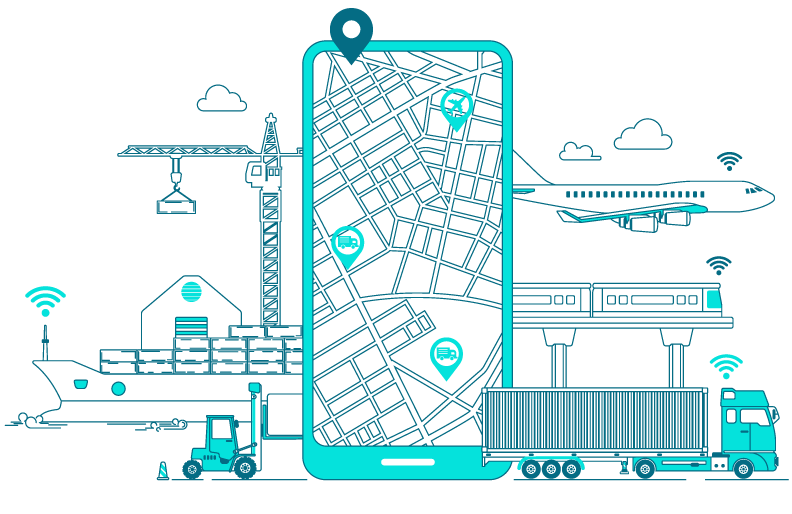Reverse logistics is the process of managing and optimizing the flow of goods and materials from the point of consumption back to the point of origin or disposal.
The reverse logistics network structure and design play a critical role in facilitating the efficient and cost-effective handling of returned products and materials. This white paper provides an overview of the key considerations for designing an effective reverse logistics network.
Reverse Logistics Network Structure
The reverse logistics network structure is a complex system that involves various players, including manufacturers, distributors, retailers, and logistics service providers. The structure of the reverse logistics network depends on the type of products, the size of the market, and the geographical location of the customer base. Generally, the reverse logistics network comprises three levels: the collection level, the consolidation level, and the disposal level.
-
Collection Level
The collection level is the initial stage of the reverse logistics process, where the customers or end-users return the products to the manufacturer, retailer, or other designated collection points. The collection level involves the following activities:
a. Reverse Logistics Center (RLC): RLC is a centralized facility where the returned products are received, sorted, and processed for further disposition. The RLC is responsible for conducting the inspection, repair, and refurbishment of the products.
b. Collection Points: Collection points are the locations where the customers can return the products. Collection points can be retail stores, service centers, or warehouses.
c. Transportation: Transportation is an essential component of the collection level. The transportation mode and route selection depend on the type and volume of returned products, distance, and delivery time.
-
Consolidation Level
The consolidation level is the intermediate stage of the reverse logistics process, where the returned products from various collection points are consolidated and transported to the RLC. The consolidation level involves the following activities:
a. Sorting and Segregation: Sorting and segregation of the returned products based on their type, condition, and disposition.
b. Packaging and Labelling: Packaging and labelling of the products to ensure safe handling and transportation.
c. Transportation: Transportation of the consolidated products from the collection points to the RLC.
-
Disposal Level
The disposal level is the final stage of the reverse logistics process, where the products are disposed of in an environmentally friendly and cost-effective manner. The disposal level involves the following activities:
a. Recycling: Recycling of the products by reusing the components and materials for the production of new products.
b. Disposal: Disposal of the products that cannot be recycled, in a manner that minimizes their impact on the environment.
c. Donations: Donating the products that are in good condition to charitable organizations or non-profit organizations.
Reverse Logistics Network Design
The design of the reverse logistics network depends on several factors such as the volume and type of returned products, geographical location, and customer requirements. The following are the key considerations for designing an effective reverse logistics network:
- Product Characteristics: The product characteristics such as size, weight, and condition, play a crucial role in determining the reverse logistics network design. The design should consider the handling requirements of the products, including their packaging, logistics management, and storage.
- Network Configuration: The network configuration includes the location and number of collection points, consolidation centers, and disposal facilities. The network design should optimize the transport routes, reduce transportation costs, and minimize the time to dispose of the products.
- Technology: Technology plays a significant role in designing an efficient reverse logistics network. The use of technology such as barcoding, RFID, and GPS tracking can improve the visibility and traceability of the products in the reverse logistics network.
- Legal and Regulatory Requirements: The design of the reverse logistics network should comply with the legal and regulatory requirements related to product disposal, recycling, and transportation.
- Cost: The cost is a critical factor in designing the reverse logistics network. The design should optimize the cost of handling, transportation, and disposal of the returned products. The cost optimization can be achieved by consolidating the products, optimizing the transportation routes, and selecting the appropriate disposal method.
- Customer Service: Customer service is a crucial factor in designing the reverse logistics network. The network should ensure timely and efficient handling of the returned products, provide visibility and transparency to the customers, and offer multiple return options to enhance the customer experience.
Conclusion:
In conclusion, the reverse logistics network structure and design are critical factors in managing and optimizing the flow of goods and materials in the reverse logistics process. The structure of the reverse logistics network involves three levels: the collection level, the consolidation level, and the disposal level.
The design of the reverse logistics network should consider various factors such as product characteristics, network configuration, technology, legal and regulatory requirements, cost, and customer service.
The effective design of the reverse logistics network can reduce the costs, enhance the customer experience, and improve the sustainability of the supply chain.

